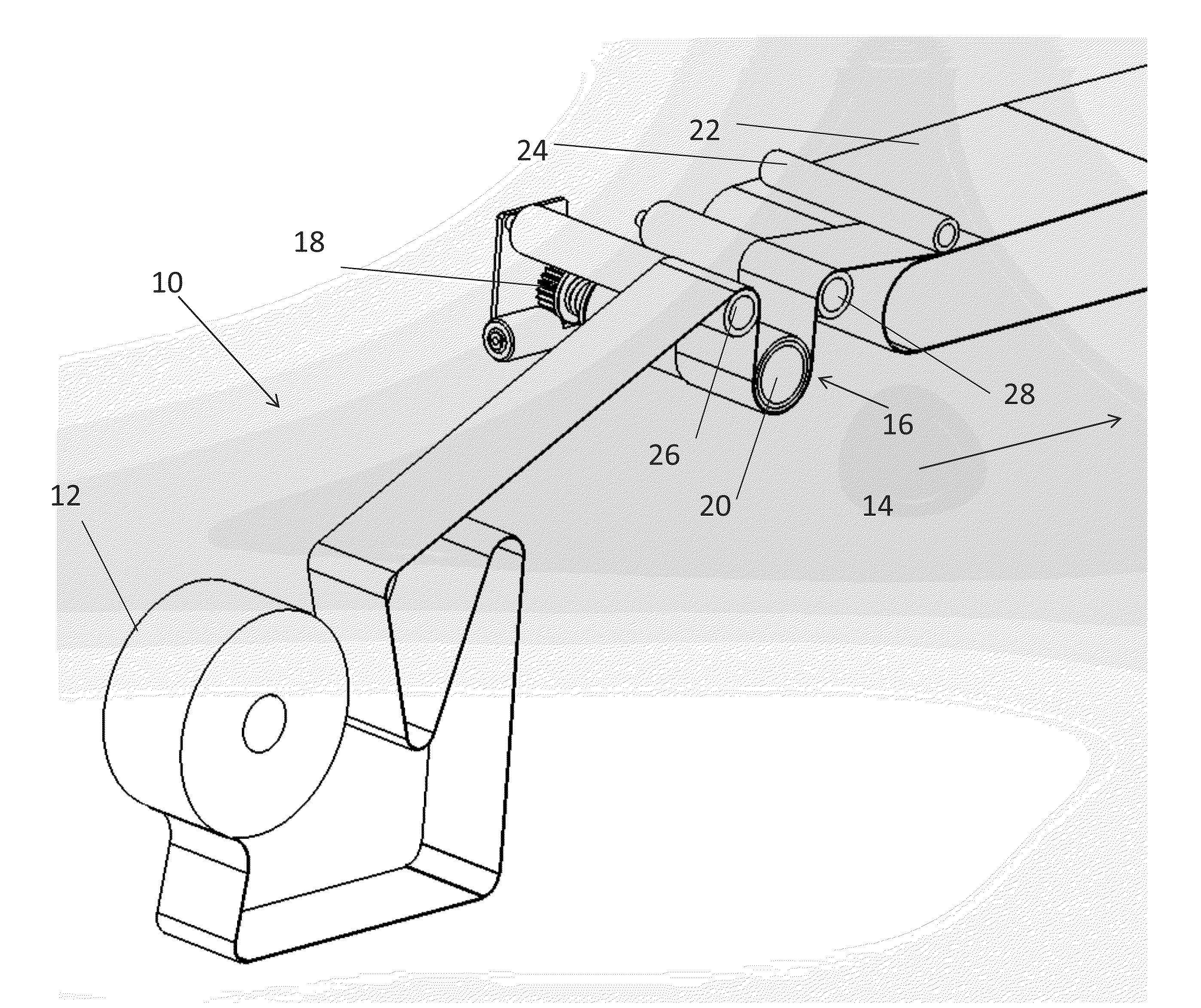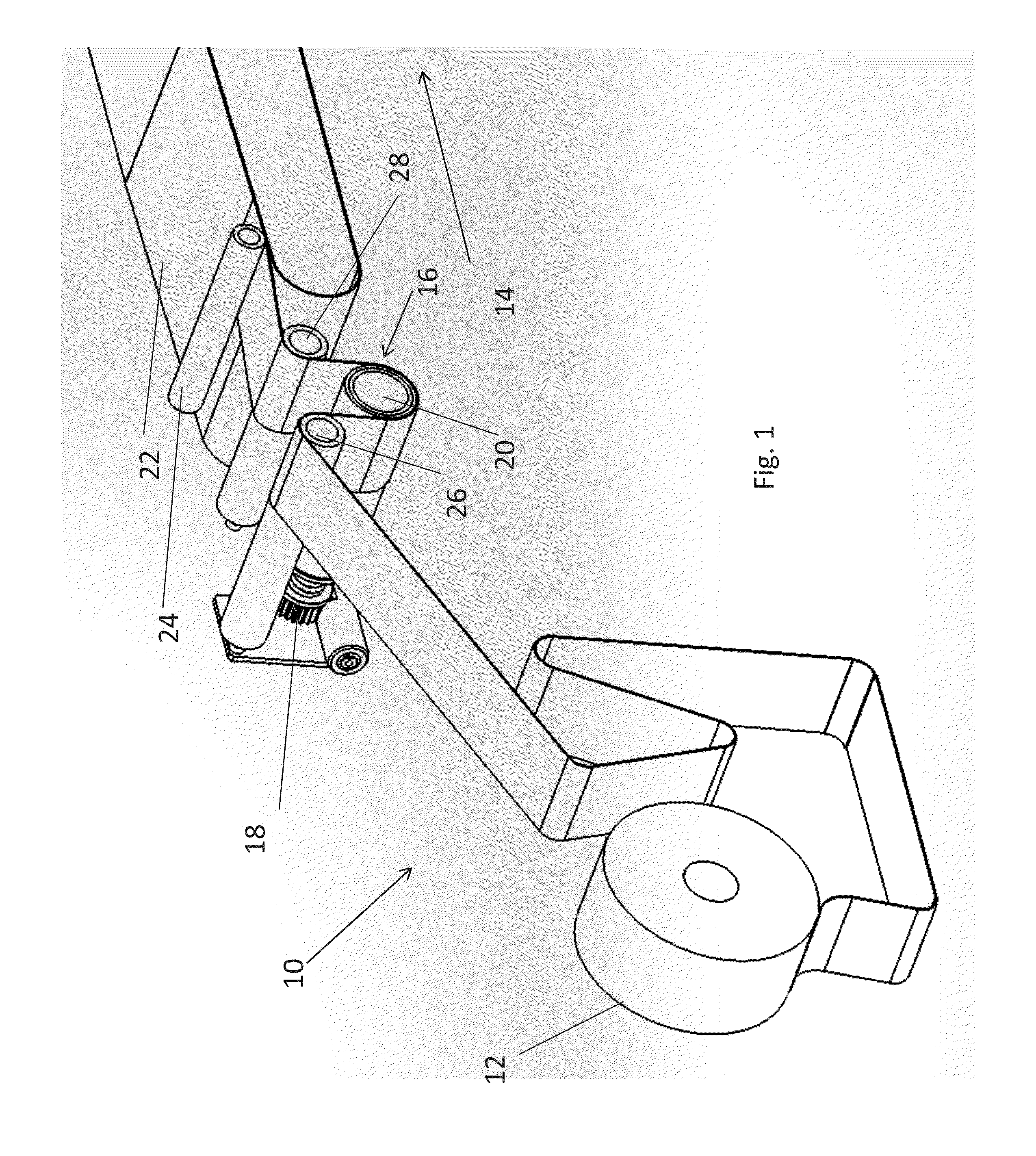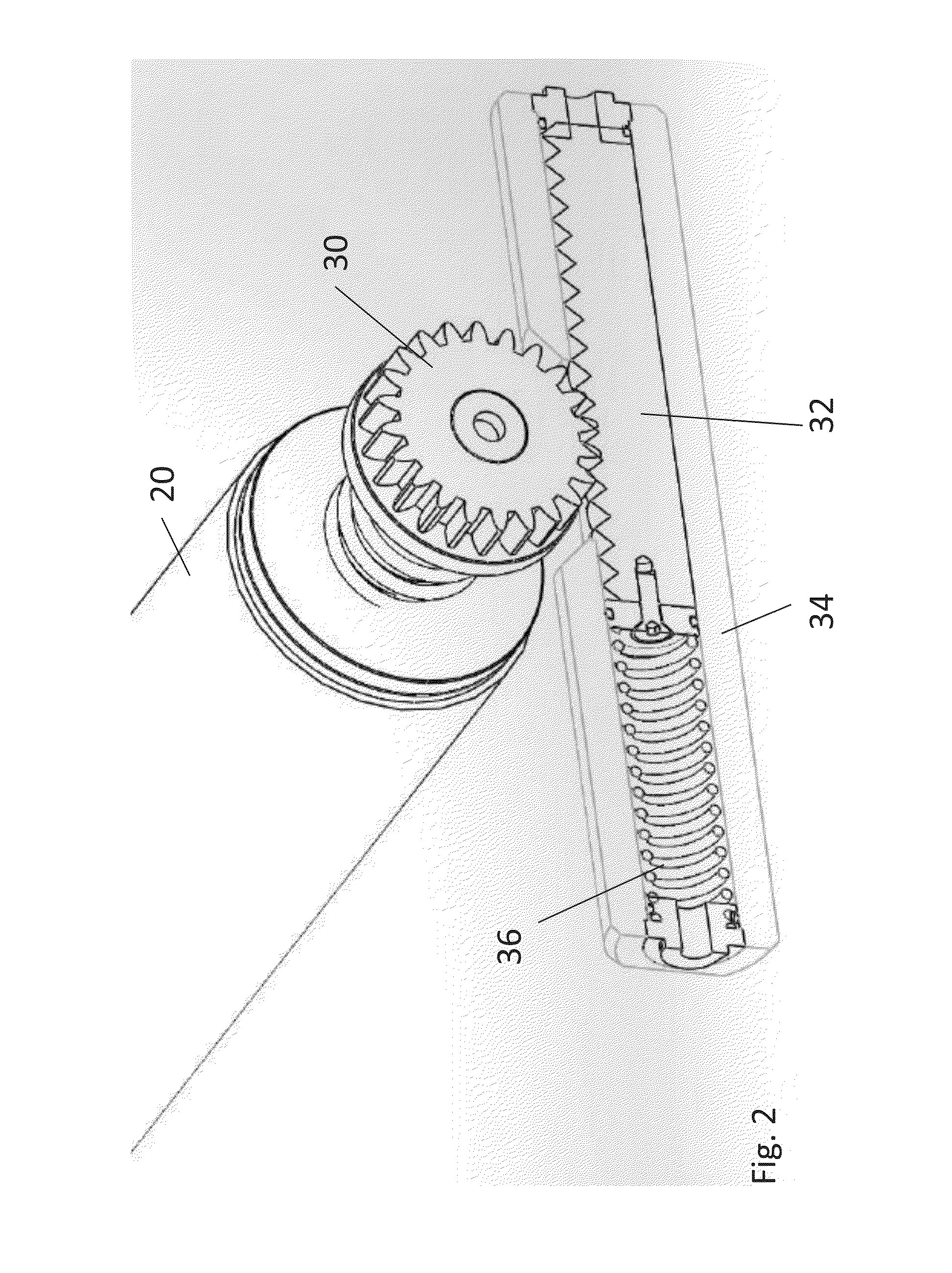Tensioning mechanism for a textile feed to a stepped operation digital textile printer
a technology of digital textile printer and tensioning mechanism, which is applied in the direction of dyeing process, web handling, transportation and packaging, etc., can solve the problems of textile overfeed and thus loosening, uneven and distorted print, damage to both printheads and printing process,
- Summary
- Abstract
- Description
- Claims
- Application Information
AI Technical Summary
Benefits of technology
Problems solved by technology
Method used
Image
Examples
Embodiment Construction
[0055]The present invention, in some embodiments thereof, relates to a tensioning mechanism for a textile feed to a stepped operation digital textile printer and, more particularly, but not exclusively, to a feeder for a textile printer that prints rolls of fabric.
[0056]The present embodiments may insert a tension into the feed mechanism, which causes a pullback at the end of each feed to take up any slack and pull the fabric taut prior to the individual printing operations.
[0057]The tension may be from a tensioning mechanism.
[0058]In one embodiment the feed works against a spring. The spring is tensioned by the feed step and then is released after the feed step to reverse the feeder mechanism and pull the fabric taut.
[0059]An alternative embodiment of the tensioning mechanism is a pneumatic cylinder. The cylinder is compressed by the feed step and then is released after the feed step to reverse the feeder mechanism, take up the slack in the same way and pull the fabric taut. The pn...
PUM
| Property | Measurement | Unit |
|---|---|---|
| tension | aaaaa | aaaaa |
| length | aaaaa | aaaaa |
| weight | aaaaa | aaaaa |
Abstract
Description
Claims
Application Information
 Login to View More
Login to View More - R&D
- Intellectual Property
- Life Sciences
- Materials
- Tech Scout
- Unparalleled Data Quality
- Higher Quality Content
- 60% Fewer Hallucinations
Browse by: Latest US Patents, China's latest patents, Technical Efficacy Thesaurus, Application Domain, Technology Topic, Popular Technical Reports.
© 2025 PatSnap. All rights reserved.Legal|Privacy policy|Modern Slavery Act Transparency Statement|Sitemap|About US| Contact US: help@patsnap.com



